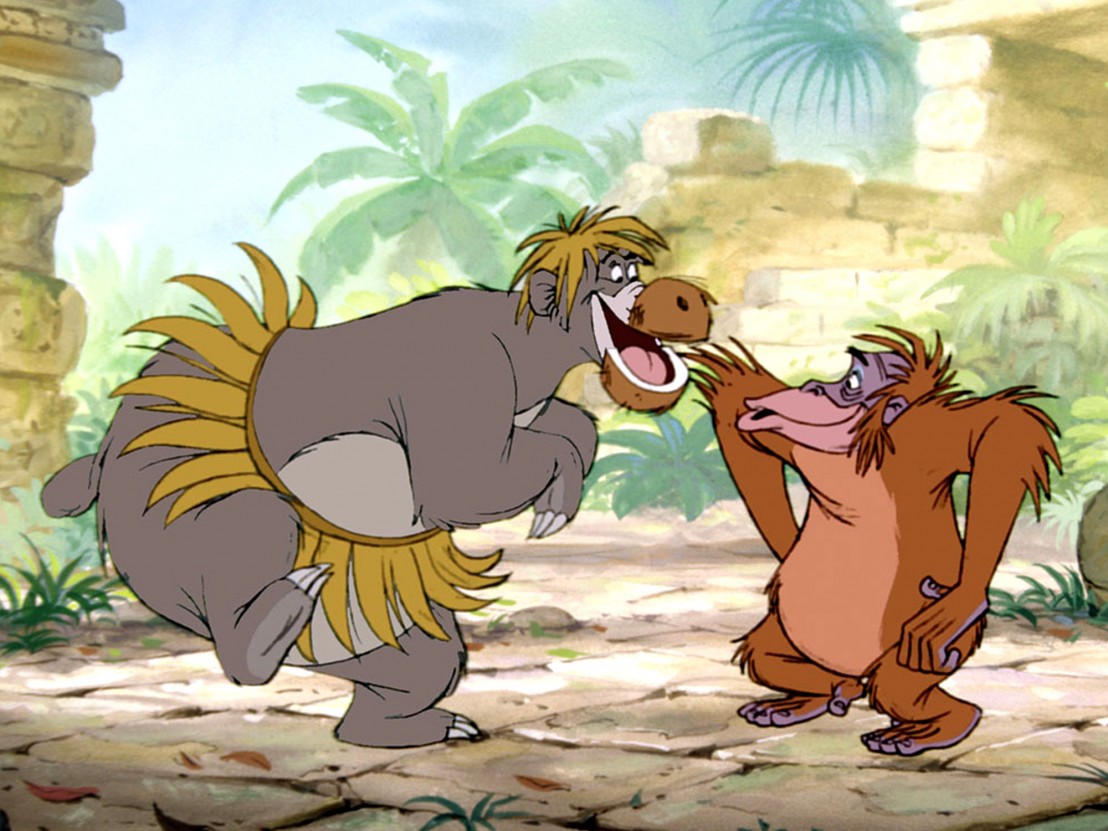
Rudyard Kipling’s ‘The Jungle Book’ has a lot of songs in it, but none of them contain the phrase ‘Oo-bi-do’. Yet that didn’t stop this rugged work of Victorian fiction from being transformed into a breezy, 76-minute animated feature brimming with bar-room blues. Indeed, anyone discovering the source material for the first time today would be hard pressed to see how Kipling’s tale could be so ruthlessly simplified. But then, Walt Disney wasn’t just anyone.
Perhaps fittingly, the Law of the Jungle – which holds sway over the animal kingdom in Kipling’s version – also played a major part in the production itself, and by the time Disney’s film prowled into theatres in 1967, it had more than a touch of claret on its claws. But in order to tell the story of how Disney brought ‘The Jungle Book’ to the big screen, you have to follow the trail back to where it all began: on the printed page.
Seething with the mood and mystique of rural India, ‘The Jungle Book’ was first published in various London journals in the 1890s as a loose series of poems and short stories. In 1894 they were reworked as a collection, with ‘The Second Jungle Book’ coming out the following year. Misfits fascinated Kipling. While his outlook was staunchly hierarchical, he disliked the ceremonial trappings of Empire, and would refuse a knighthood twice by 1903 and the Order of Merit, again twice, by 1924. With that in mind, it makes sense that the star of his two books is a young lad who becomes something of an oddball for two very different communities.
Mowgli’s fateful, life-changing step is simply to wander off as an infant while his family is under attack from tyrannical Bengal tiger, Shere Khan. Taking refuge with a family of wolves, Mowgli nestles among the cubs straight away and beguiles their parents, who adopt him as one of their own. As a boy, Mowgli is schooled in the ways of beasts by the Obi Wan-like panther Bagheera and the sage, avuncular bear Baloo, gentle custodian of the Jungle’s customs. Also watching his back is the cunning rock-snake Kaa, completing a protective trinity. However, Khan’s sly manipulation of the wolves forces Mowgli to flee the jungle and find refuge back among his own people, who view him with deep distrust. Faced with life as a dual outcast, Mowgli realises that he must face Khan once and for all.
Kipling’s wonderment hinges on his use of anthropomorphic animal characters – which is why Zoltan Korda’s 1942 stab at bringing Mowgli and co to the big screen is a bit of a let-down. Very likely fearing the technical challenges involved with creating a literal depiction, Korda focused almost exclusively upon the struggle that Mowgli (played by the charismatic Sabu) endures while trying to reintegrate with his own kind. Except for Khan, Mowgli’s animal acquaintances are glossed over, and Korda doesn’t attempt to grant them dubbed voices. It’s a pretty film, but it misses huge, vital chunks of what made the Kipling tales so special.
No such restraint applies to 2D animation: a medium purpose-built for the fantastical and suspension of disbelief. Floyd Norman, a bona fide Disney legend who worked as assistant animator on several of the studio’s classic features, explains that, “[Walt] was attracted to the Kipling novel because of the animals,” an aspect of the book that chimed readily with the anthropomorphic magic of such films as Lady and the Tramp and One Hundred and One Dalmatians. With his studio an entrenched hit factory, and a clear opportunity at hand to do things Korda didn’t dare try, Disney secured the rights to merge Kipling’s world with his own. But had he bitten off more than he could chew?
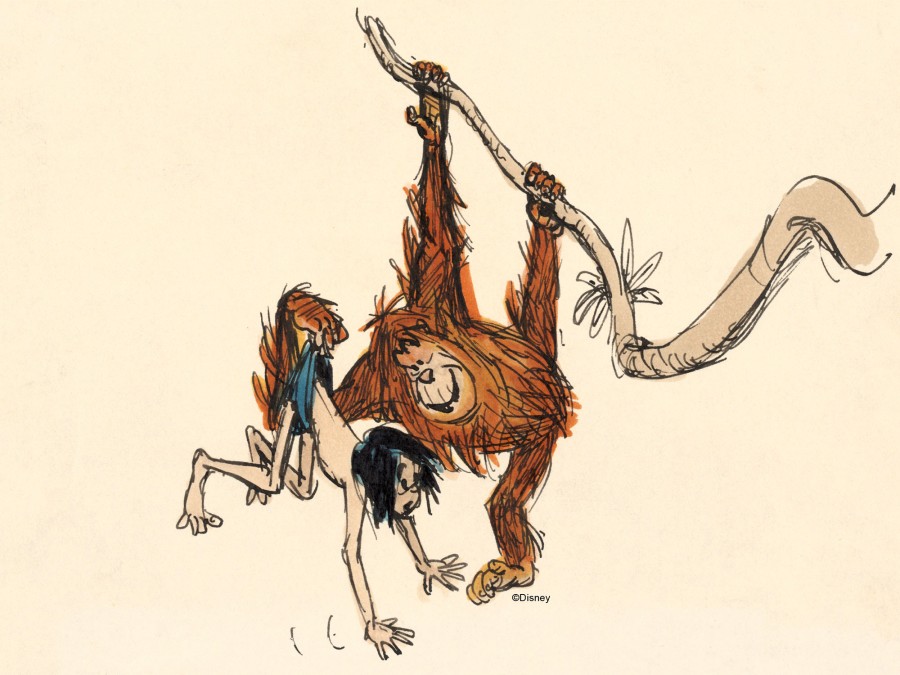
The man who would test that question most directly was Dalmatians veteran Bill Peet, then one of Disney’s leading purveyors of ‘story art’ – a blend of screenwriting and storyboarding. Working alongside songwriter Terry Gilkyson in 1963, Peet began to push through the jungle and imagine how Kipling’s book could be refashioned as a Disney piece. As it turned out, he was quite enamoured of his journey, and adapted the material in a similar spirit to how he’d tackled Dodie Smith for Dalmatians and TH White for that year’s The Sword in the Stone – Disneyfying, but with an undercurrent of respect for the source. Peet was keen to preserve Kipling’s mythic heft. He was completely on the wrong track.
Having left Peet to his own devices – as he had on Dalmatians and The Sword in the Stone – Disney checked back in when the latter under performed at the box-office and was furious with the project’s direction. Peet and Gilkyson were out, and the film was shut down. “Naturally, Bill was not pleased with Walt’s rejection of his vision, and he made his feelings known,” Norman says. “This wasn’t the first time Walt and the veteran writer had clashed. After the usual shouting match, Peet walked off the motion picture and out of the Walt Disney Studios. We expected Bill to return once things had become less heated. However, he’d reached the end of his rope. Bill gave in his notice and never returned, ending a career that had begun in the 1930s.”
According to Norman, however, The Jungle Book didn’t stay shut down for long. Tasked with leading a fresh mission was Wolfgang ‘Woolie’ Reitherman, director of Sleeping Beauty, Dalmatians and Stone. “Bill Peet had been a solo act,” Norman recalls, but now, the Old Maestro would enlist the story team Woolie usually utilised. Veterans Larry Clemmons and Vance Gerry were joined by Al Wilson, funnyman for [Rocky and Bullwinkle stable] Jay Ward Productions. Animators Dick Lucas and Eric Cleworth often doubled as story artists, so they also joined the team. Finally, a newcomer would be recruited from the animation wing: Floyd Norman would have his unexpected introduction to Walt’s coveted story department.
Tempted away from his drawing board as if by the mesmeric Kaa himself, Norman took an uncredited writing role, and instantly grasped what Disney was driving at: “When we began the rewrite, Walt’s instructions were clear and simple. The Old Maestro said, ‘Make it light, make it fun and make it entertaining.’ Despite being a no-nothing kid back in 1966, I knew exactly what he wanted: Walt Disney wanted The Jungle Book to be a Walt Disney film.“
That required a dramatic shedding of numerous characters from the book in an effort to pare down its knotty, non-linear structure. Even the wolves had to be downplayed, with the script focusing more heavily on the mentor/mentee relationship between Bagheera and Mowgli. Handing off the whole Voice of Reason gig to the panther triggered two significant knock-on effects: Kaa became a much more ambiguous snake in the grass, while the Buddha-like, easy-going qualities of the book’s Baloo were turned up to the point where his animated twin became almost like a furry prototype of The Dude.
The project couldn’t have asked for a finer pedigree of animator. Reitherman – who had come up through the studio’s ranks via Snow White and the Seven Dwarfs, Pinocchio and Peter Pan – was joined by elephant wrangler John Lounsbery, vulture keeper Eric Larson and tiger handler Milt Kahl. All four were card-carrying members of Disney’s ‘Nine Old Men’, the crack squad of artistic and technical titans who had been with him from the start. Determined to capture lightning in a bottle, Reitherman’s team utilised ‘xerography’, a technique that enabled the animators’ raw, paper-based drawings to be simply photocopied on to the cels, eliminating the need to ink them one by one and harnessing the artists’ more spontaneous flashes of inspiration.
In keeping with the new adaptation’s buoyant tone, and Disney’s desire for The Jungle Book to be fully on brand, he hired longstanding studio stalwarts in the shape of the ‘Supercalifragilisticexpialidocious’ Sherman Brothers to rewrite the film’s songbook. But there was one, vital concession on that front, without which the film would not have been the same. Norman elaborates: “Although Terry Gilkyson had been fired we begged Walt to allow us to keep one of his songs. Thankfully, he let us hold on to ‘The Bare Necessities’.” In the voice-artists’ booth, meanwhile, an exhaustive, nationwide hunt for the film’s Mowgli culminated in Reitherman’s son Bruce landing the part, while the casting of George Sanders as Shere Khan directly influenced how Kahl drew the character.
As soon as the film began to coalesce, morale on the production ran high. “Our main concern was keeping Walt happy,” says Norman. “Since the Old Maestro seemed pleased with the way the movie was going, we were delighted. We knew we had an entertaining movie.”
Which brings us to another big question: what was Walt Disney really like? “That’s enough to fill an entire book,” Norman remarks. “I’ve often lectured on Walt Disney’s management style and his abilities as a creative leader. Walt demanded the best of all those who worked for him. He was a tough story editor and never satisfied with a job half done. The Old Maestro was never generous with compliments – and it was best not to expect any. If you managed to survive a story meeting with Walt Disney, you could consider yourself lucky. Looking back at The Jungle Book, we now know that Walt’s health was failing at the time. [Disney died of lung cancer in December 1966, 10 months before the film came out.] However, he gave no signs of sickness and worked with his usual vigour.”
So, what are Norman’s feelings about how cel animation has largely given way to CGI? “Another subject worthy of a whole book. I come from the tradition of hand-drawn animation, and I still consider the classic Disney animated films to be Disney’s best. While I embrace CGI as a new asset in the filmmakers’ toolbox, I do not consider it the next step in the evolution of animation. For me, there is nothing old or obsolete about hand-drawn, traditional animation, and I eagerly look forward to the day when we can see hand-drawn art back on the big screen. CGI is great in many ways. However, the computer and technological innovation can never replace the gifted hand of the artist.”
Disney’s The Jungle Book is released 15 April. Follow Matt Packer on Twitter @mjpwriter
Published 11 Apr 2016
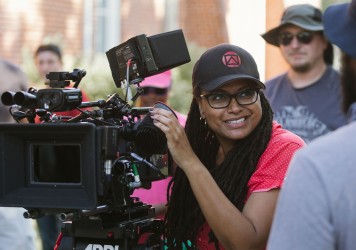
The Selma director is in talks to direct a major new adaptation of ‘A Wrinkle in Time’ for the studio.
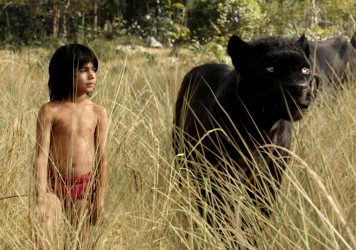
Jon Favreau brings Rudyard Kipling’s classic tale crashing into the 21st century. The result is astonishing.
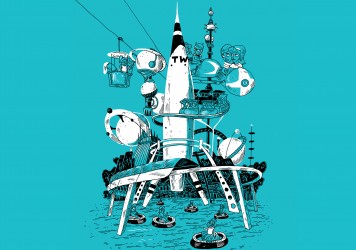
As Disneyland turns 60, we turn back the clock to gauge the cultural impact of the most enchanted corner of the Magic Kingdom.